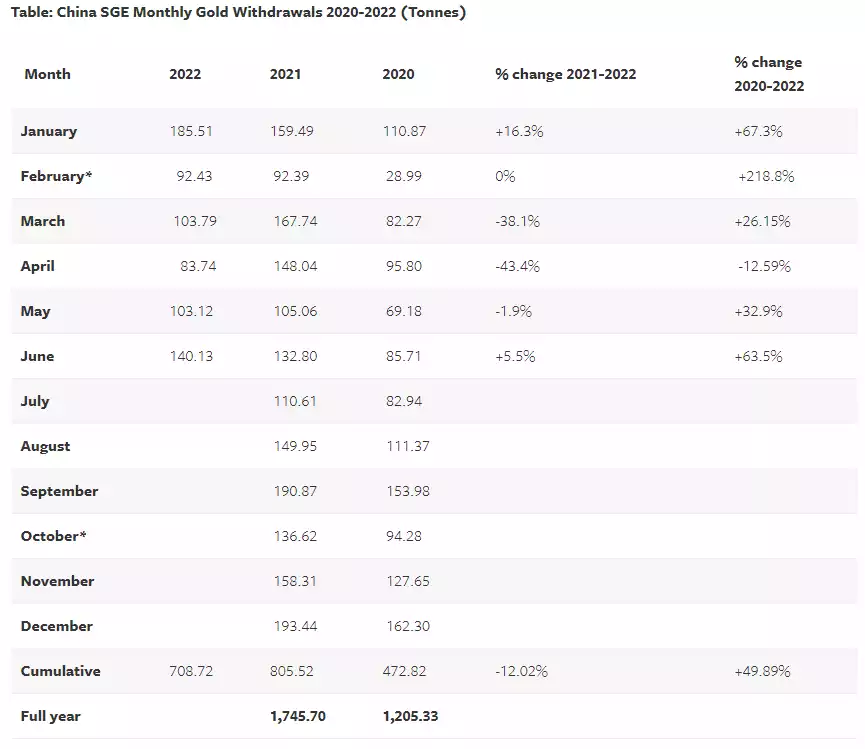Goldman Sachs Call US$2500 Gold Soon
News
|
Posted 11/07/2022
|
12743
Any discussion of gold’s price action must inevitably look at what’s happening in China, easily the worlds largest buyer of the precious metal. The softness of the metals price of late has many scratching their heads amid rampant inflation and a war. However there are some key fundamental indicators that suggest this bottoming may be short lived and has Goldman Sachs calling for USD2500 gold soon.
Firstly China has announced it is about to unleash more stimulus to re-kickstart its slowing economy hit heavily with lockdowns and surging input costs. Analysts are forecasting a 4.1% GDP for the country who’s own forecast is 5.5%. Whilst that is high for developed nations, it pales compared to China’s ‘normal’ 6%+ prints.
That supports gold in 2 ways. Firstly, it reinforces the broadness of the global economic slowdown when even the nation that has done all the heavy lifting is softening quickly. Combined with all the liquidity removed through global financial tightening and inflation and the stagflation induced crash odds rise significantly where gold catches the safe haven bid. Secondly of course, lower gold prices combined with new stimulus and a lower CNY would ordinarily see China back at the gold buying table with gusto. There are early signs this may have recommenced, the following courtesy of Lawrence Williams:
“A table showing the monthly gold withdrawal figures from the SGE is set out below. SGE withdrawals are widely believed to be a strong indicator of Chinese domestic commercial gold demand, but probably excludes gold which may be being added into the nation’s gold reserves which many analysts believe may be a substantial amount held in accounts which the Chinese government claims do not need to be reported to the International Monetary Fund (IMF). If they do exist, these additional reserves may be mobilized should the rumoured alternative reserve currency being set up by Russia, China and the other BRIC nations see the light of day.”

That we are seeing such numbers whilst the country is still in the grips of lockdowns and before the stimulus package arrives is encouraging.
In a recent paper by Goldman Sachs’ they point out their so called “Fear and Wealth” framework for investment demand for gold. Fear, as they describe, is what we have discussed at length of late – “If recession fears persist while the pace of Fed hikes slows down due to a normalization of inflation, then gold investment demand should finally manage to build a bullish momentum. We observed a similar dynamic at the start of the year, when growth and inflation worries emerged but it was unclear how hawkish the CBs' response would be.”
“All in all, we believe that the moderation of inflation rates can shift the market focus from continued tightening and towards recession risk.
This should be positive for gold, in our view, as it would relieve pressure from the continued rising dollar and rates but keep the support from high recession fears.
We therefore expect gold to begin to perform as the market sees more credible indications that the Fed hiking pace is moderating and there is a rotation out of equities into bonds.”
The Wealth component sees the consumer spending in Emerging Markets headed by China off the back of the proposed stimulus and an exit from lockdowns.
“There is little doubt to us that Chinese lockdowns had a large impact on spot gold demand in China, with gold jewelry sales falling by 30% YoY in April. The re-introduction of Chinese lockdowns represented a significant hit to the Chinese economy and the PBOC allowed for some CNY depreciation to ease financial conditions. As the CNY dropped, gold followed it lower.
The positive news is that lockdowns are easing in China.”
Goldman’s conclusion:
“In essence, we believe the bullish gold case was merely delayed rather than derailed. Due to little structural change to our model inputs, we keep our gold price upside but delay the price path.
Finally, we see gold ETF purchases resuming now that the speculative part of the positioning has been cleaned up. The risk to this view would be a continuation of the wealth/liquidity shock until its magnitude matches March 2020 or October 2008. This could lead to a temporary fall in the gold price as market participants cut all positions to increase their dollar liquidity and meet margin calls.
We revise our 3, 6 and 12m targets to $2,100/2,300 and $2,500/toz, from $2,300/2,500 and $2,500/toz.”
For context, $2500 is a 43% increase from current levels.